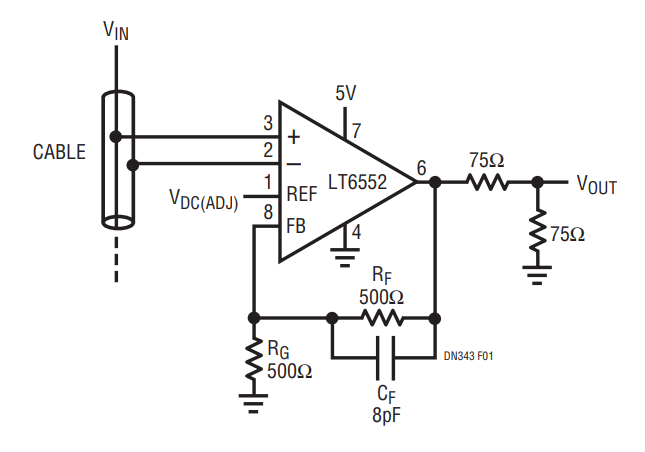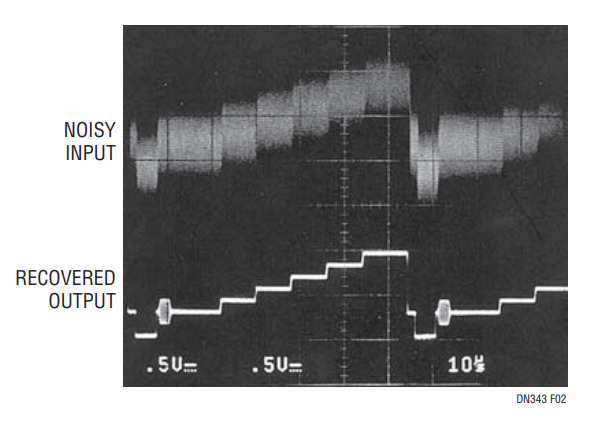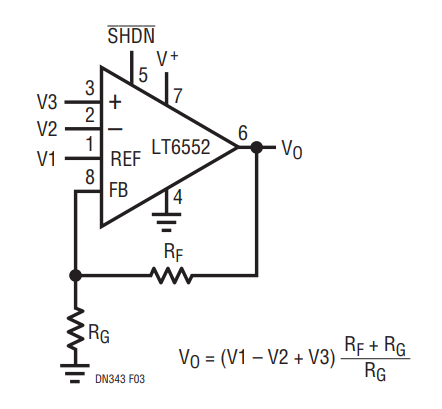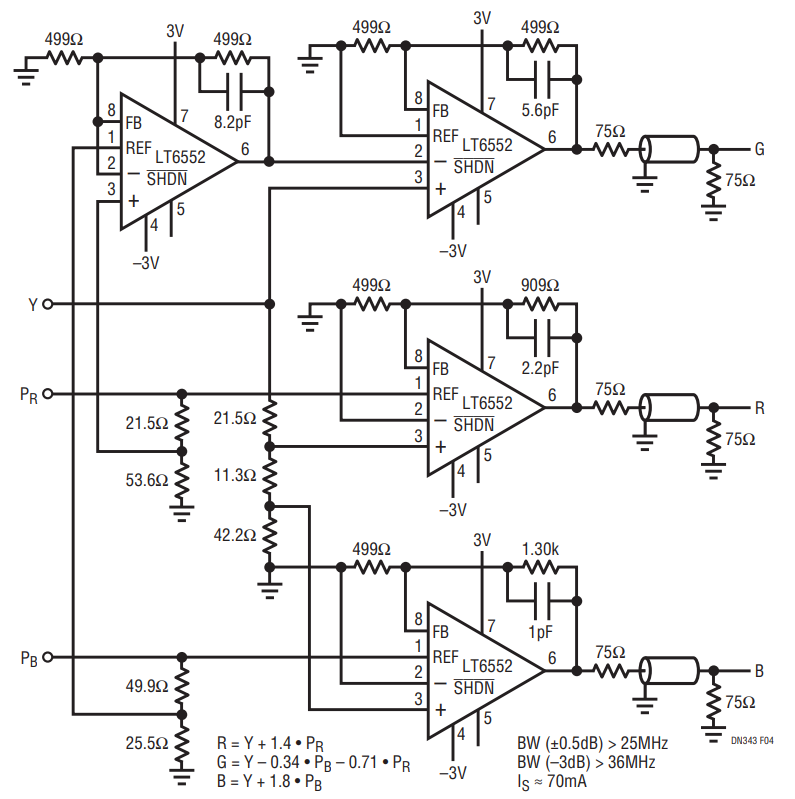Design Note 343: Video Difference Amplifier Brings Versatility to Low Voltage Applications
Introduction
The LT6552 is a specialized dual-differencing 75MHz operational amplifier ideal for rejecting common mode noise as a video line receiver. The input pairs are designed to operate with equal but opposite large-signal differences and provide exceptional high frequency common mode rejection (CMRR of 65dB at 10MHz), thereby forming an extremely versatile gain block structure that minimizes component count in most situations. The dual input pairs are free to take on independent common mode levels, while the two voltage differentials are summed internally to form a net input signal. The LT6552 is optimized for low supply voltages, ranging from 3V to 12V between the rails. In single supply operation at 3.3V, the input range includes ground and an output that can swing within 400mV of either supply rail when driving a 150Ω load. Additionally, a shutdown feature is provided to allow easy power management in supply current-sensitive applications.
Dual Input Pair Zaps Common Mode Noise Pickup
The basic application of the LT6552 is that of a high CMRR difference amplifier as shown in Figure 1. Only two resistors are required to set the difference gain (Gain = 2 in this example). For unity gain, no additional components are required. Single supply operation usually requires a means of output offset control so that signals aren’t clipped. The dual input structure of the LT6552 makes this easy (see VDC(ADJ) in Figure 1). The circuit shown in Figure 1 is especially effective in removing ground noise from video signals in vehicular and industrial applications, as shown in Figure 2, killing common mode noise by over a factor of 1000 and providing a lower solution cost than other op amp based topologies because of the fewer required components.

Figure 1. Noise Rejecting Sense Amplifier with DC Adjust.

Figure 2. Common Mode Noise Eliminated from Video Signal.
Perform Video Rate Analog Arithmetic
Because of its dual differencing input structure, the LT6552 is able to readily process both additive (noninverting) and subtractive (inverting) variables without the need for complicated resistor networks. Figure 3 shows that the output is a function of three input variables with the overall scaling set by the feedback resistors. This property provides a useful means of differential to single ended conversion with offset control or performing multivariate functions such as the YPBPR to RGB video adapter application shown in Figure 4. The circuit of Figure 4 uses the fewest possible amplification stages to accomplish the needed matrix conversion functions while operating on the lowest supply voltages (±3V). Input black levels should be near 0V for best results and sync on Y is mapped to all three outputs, though typically only needed on G.

Figure 3. General Purpose Arithmetic Block.

Figure 4. YPBPR to RGB Component Video Converter.
Conclusions
By virtue of its dual differencing input structure and ability to operate from low supply voltages, the LT6552 provides a versatile and high performing gain block for modern analog applications. Of particular value is the part’s ability to recover difference signals in the presence of strong common mode interference, such as in vehicular and closed-circuit video applications.
